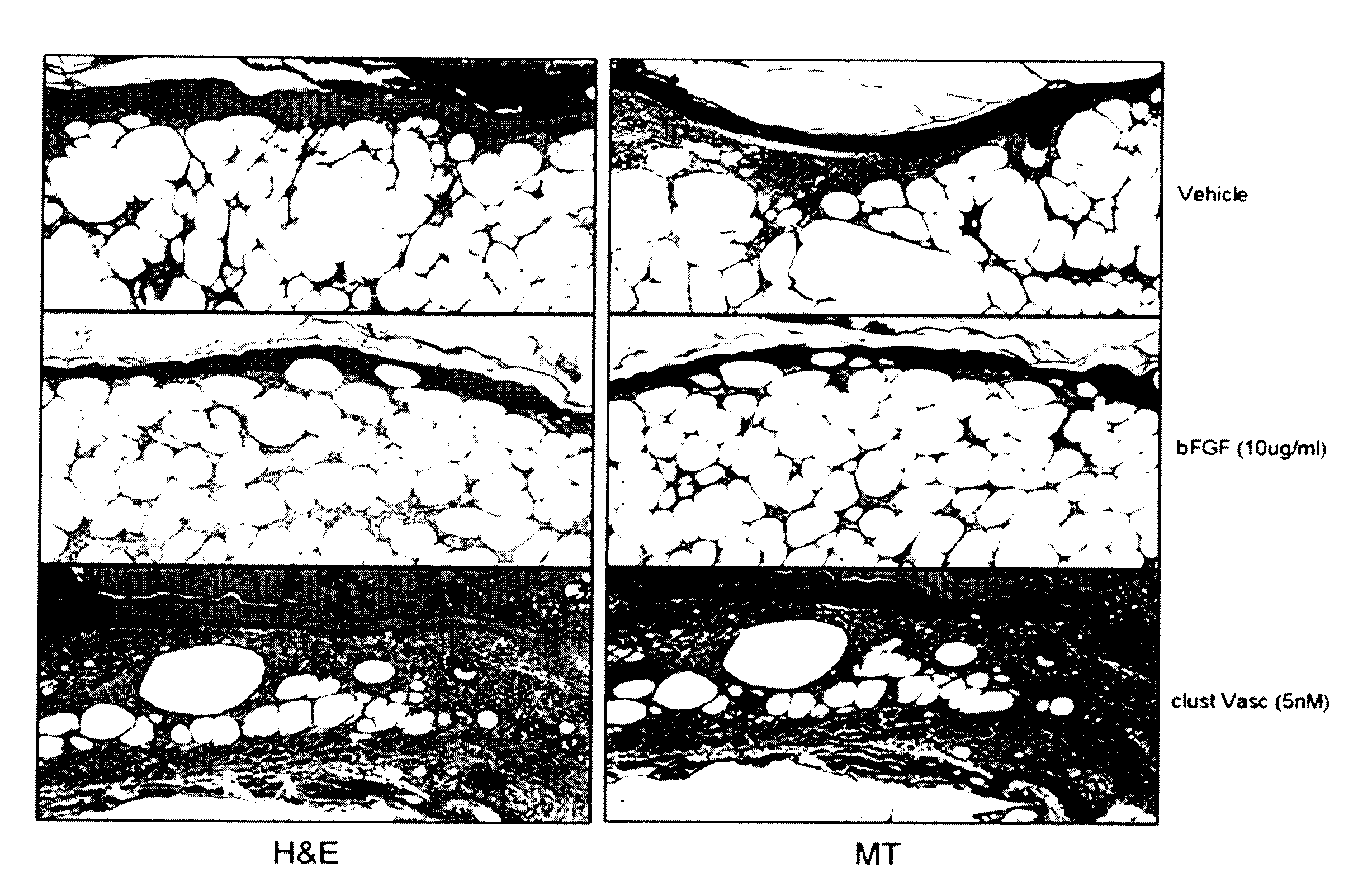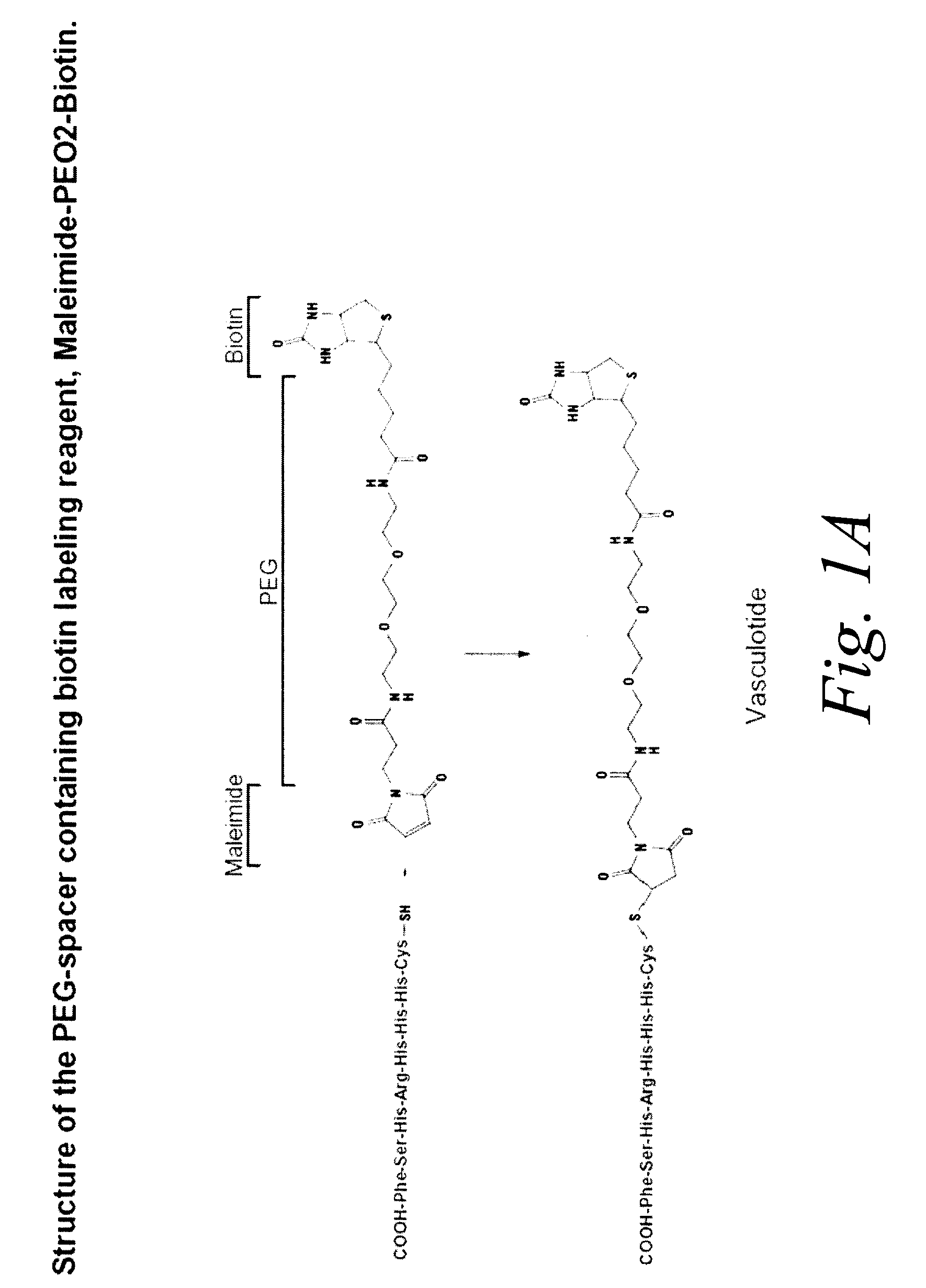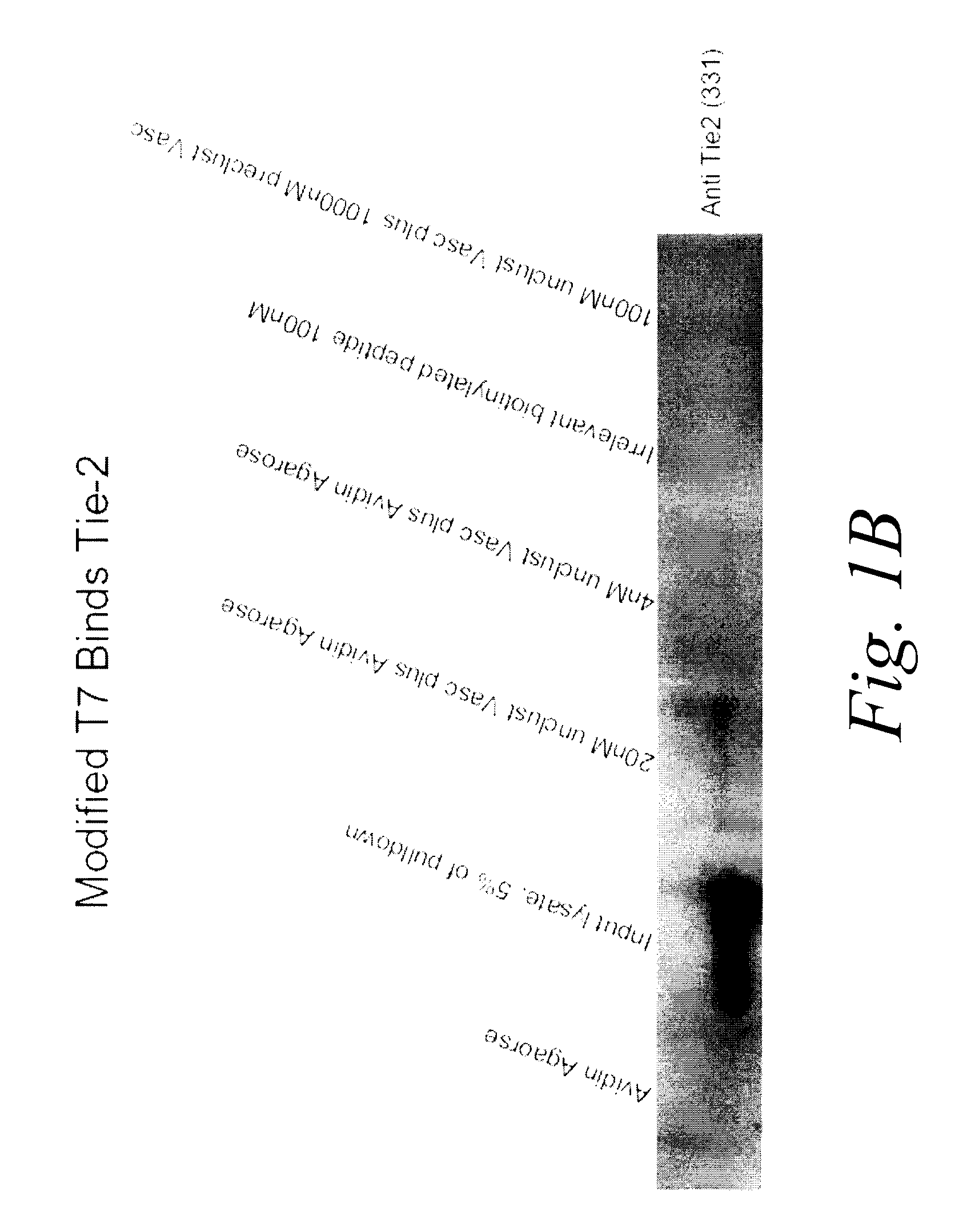Multimeric tie 2 agonists and uses thereof in stimulating angiogenesis
- Summary
- Abstract
- Description
- Claims
- Application Information
AI Technical Summary
Benefits of technology
Problems solved by technology
Method used
Image
Examples
example 1
Preparation of a Tetrameric Tie 2 Binding Peptide, Vasculotide
[0176]In this example, a tetrameric form of a 7mer peptide known to bind Tie 2 was prepared, using a biotin-avidin system to cluster the peptide as a tetramer. The peptide, referred to as T7, was previously described in Tournaire R. et al. (2004) EMBO Reports 5:262-267 and has an amino acid sequence of His-His-His-Arg-His-Ser-Phe (SEQ ID NO: 1).
[0177]The peptide was synthesized using Fmoc Solid Phase Peptide Synthesis, a summary of which synthesis method can be found in W. Chan, Fmoc Solid Phase Peptide Synthesis: A Practical Approach, Oxford University Press (UK), 1999. The peptide was synthesized using Applied Biosystems' ABI433A Peptide Synthesizer (Foster City, Calif., USA) using manufacturer's instructions with a few modifications. The modifications were: 1) coupling time was extended to 17.5 minutes and 2) HBTU was substituted by HATU. The resin used was Wang resin. To create a free sulfhydryl group on the peptide f...
example 2
Characterization of the Tie 2 Binding of Vasculotide
[0185]In this example, the ability of Vasculotide to bind the Tie 2 receptor, despite the engineered modifications, was tested using an in vitro pull down assay. In the pull down assay, a cell lysate of EaHy926 endothelial cells (which express high levels of Tie 2) was prepared in Phospho Lipase Cγ lysis buffer (50 mM Hepes buffer pH 7.5, 150 mM NaCl, 10% glycerol, 1% Triton X-100, 1.5 mM MgCl2, 1.0 mM EGTA, 10 mM NaPPi, 100 nM NaF, 2 mM Na3VO4, 1× aprotinin, 1× leupeptin and 1× PMSF). The whole cell lysate was mixed with either unclustered biotinylated Vasculotide or biotinylated irrelevant peptide. The biotinylated peptides then were isolated with avidin agarose and subsequently tested for their ability to precipitate Tie 2 via standard immunoblot analysis using anti-Tie 2 antibody.
[0186]The results of the immunoblot are shown in FIG. 1B. The results demonstrated that, when purified using avidin agarose resin, Vasculotide but not...
example 3
Characterization of the Tie 2 Activation by Vasculotide
[0187]Having established that Vasculotide was able to bind Tie 2 (see Example 2), the ability of Vasculotide, when clustered with avidin in a 4:1 ratio (Vasculotide:avidin), to activate the Tie 2 receptor was tested by examining several well established downstream signalling pathways in human umbilical vein endothelial cells (HUVEC) (Cambrex, New Jersey). Such signalling pathways are described in, for example, Kim, I. et al. (2000) Circ. Res. 9:952-959; Fujikawa, K. et al. (1999) Exp. Cell. Res. 2:663-672; Babaei, S. et al. (2003) Am. J. Pathol. 6:1927-1936.
[0188]HUVEC were grown on 6-well or 10 cm plates (Nunc) coated with gelatin (Sigma). HUVEC were cultured in F12 growth medium containing 10% fetal bovine serum (FBS), 0.1 mg / ml heparin sulphate, 1× penicillin, 1× streptomycin, 1× glutamine, VEGF 10 ng / ml, EGF 10 ng / ml, bFGF 5 ng / ml. All HUVEC were used between passage 3-9.
[0189]HUVEC were stimulated with one of either Ang 1 (...
PUM
| Property | Measurement | Unit |
|---|---|---|
| Fraction | aaaaa | aaaaa |
| Fraction | aaaaa | aaaaa |
| Fraction | aaaaa | aaaaa |
Abstract
Description
Claims
Application Information
 Login to View More
Login to View More - R&D
- Intellectual Property
- Life Sciences
- Materials
- Tech Scout
- Unparalleled Data Quality
- Higher Quality Content
- 60% Fewer Hallucinations
Browse by: Latest US Patents, China's latest patents, Technical Efficacy Thesaurus, Application Domain, Technology Topic, Popular Technical Reports.
© 2025 PatSnap. All rights reserved.Legal|Privacy policy|Modern Slavery Act Transparency Statement|Sitemap|About US| Contact US: help@patsnap.com



